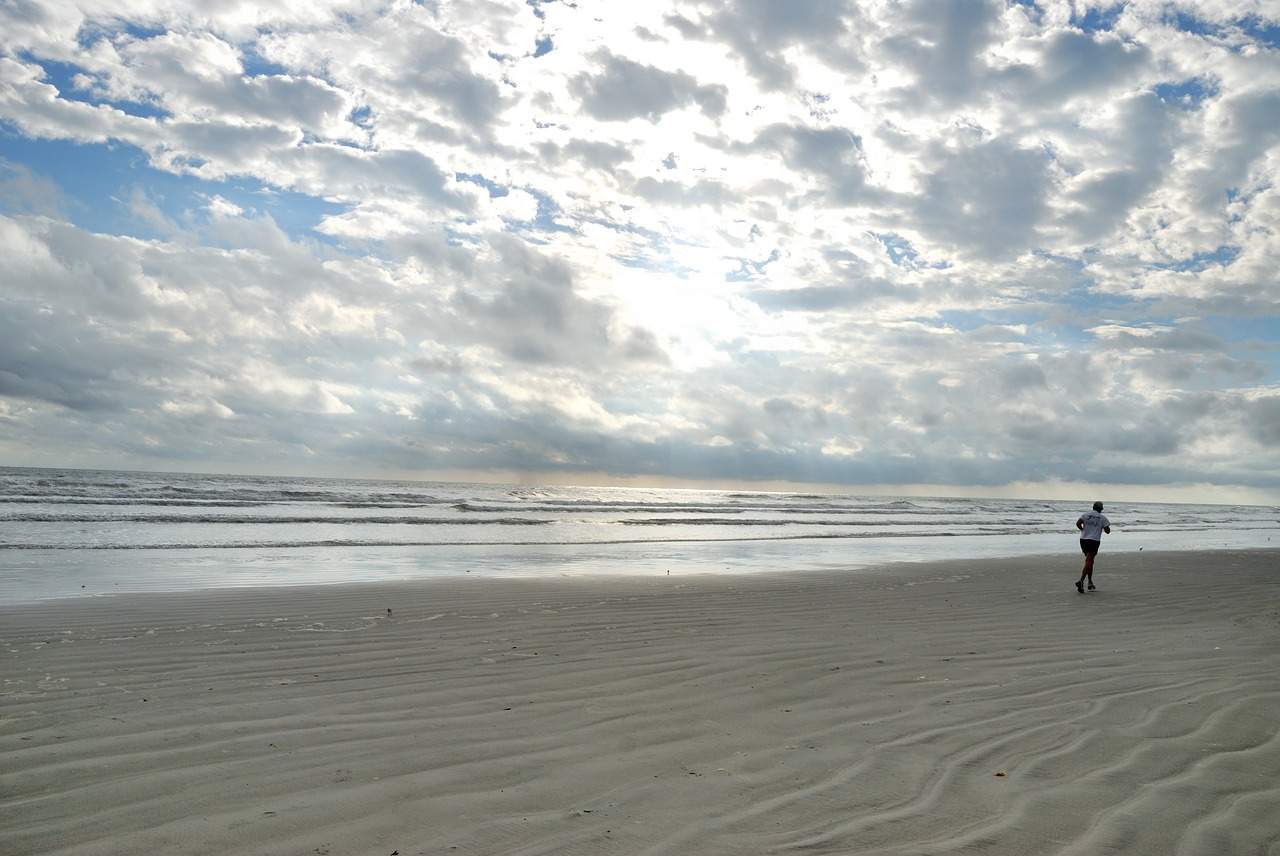Who wouldn’t love to watch the sunrise over the water while running on the beach? Can there be anything more perfect than a great workout surrounded by beautiful scenery? Are there downsides to running on the beach? Can running on sand be bad for you?
Running on sand is one of the best workouts a runner can do! It can be incredibly beneficial, but there are risks that come with it as well. Before you head out to run on the beach, make sure you know the benefits as well as the downfalls.
Benefits Of Running On Sand
There are so many benefits of running on the beach, and they don’t just have to do with the surroundings. When the tide is low, the sand closest to the water will be hard packed. This will provide a soft surface, much like a soft running trail and it will be less stressful on your knees and joints.
Running on sand further away from the water’s edge will give you a better workout and you will burn more calories than you would if you were running on pavement. Thick sand will require you to use 1.6 times more energy than you normally would.
The thicker sand has less of a bounce than pavement does so it forces your legs to work harder. This helps build strength in your knees, ankles, and calves.
Running on sand can be used as a supplementary training for speed. The sand will provide resistance which will make you work harder.

Injury Risks Of Running On Sand
Although there are many beneficial reasons to run on the sand, there are also some risky ones that you should be aware of.
Since sand is an uneven and inconsistent surface, it can cause you to be more prone to injuries. Landing on uneven surfaces can cause strain on your Achilles tendon, calves, knees, and hips. You also have to watch out for holes or rocks that you could trip on and twist an ankle.
Shoes or No Shoes?
It is completely up to you whether or not you wear shoes. Nobody wants shoes and socks full of sand. Running barefoot will allow you to move your feet without them being confined in a shoe. This can help strengthen your feet and ankles.
On the other hand, barefoot running can result in plantar fasciitis or sprained ankles because of the lack of support and the uneven surface. You also have to watch out for sharp objects like seashells, glass, or rocks that can cut you.
Wearing shoes will give you the support that you need and will keep your feet safe from cuts. It would not be any fun to have a twisted ankle and cuts on your feet if you’re on vacation. You might want to have one pair of shoes designated for running in sand. That way you don’t have to try and get all of the sand out of them every time you run.
Use Your Own Judgement
In the end, the decision to go for a run on the beach is completely up to you. While the benefits outweigh the risks, you still have to take into account that you could get injured.
The best thing that you can do would be to take it slow and build up your muscles to reduce your risk of injury. If you do head out to the beach for a peaceful run, start with a shorter run. Allow your body time to build strength, while getting used to the different surface.
Running on the beach can be a lot of fun and provides a great way to get in speed and strength training.


What a wonderfully written article, with great facts!!! Makes me wish I was at the beach now!!
Great tips and advice!